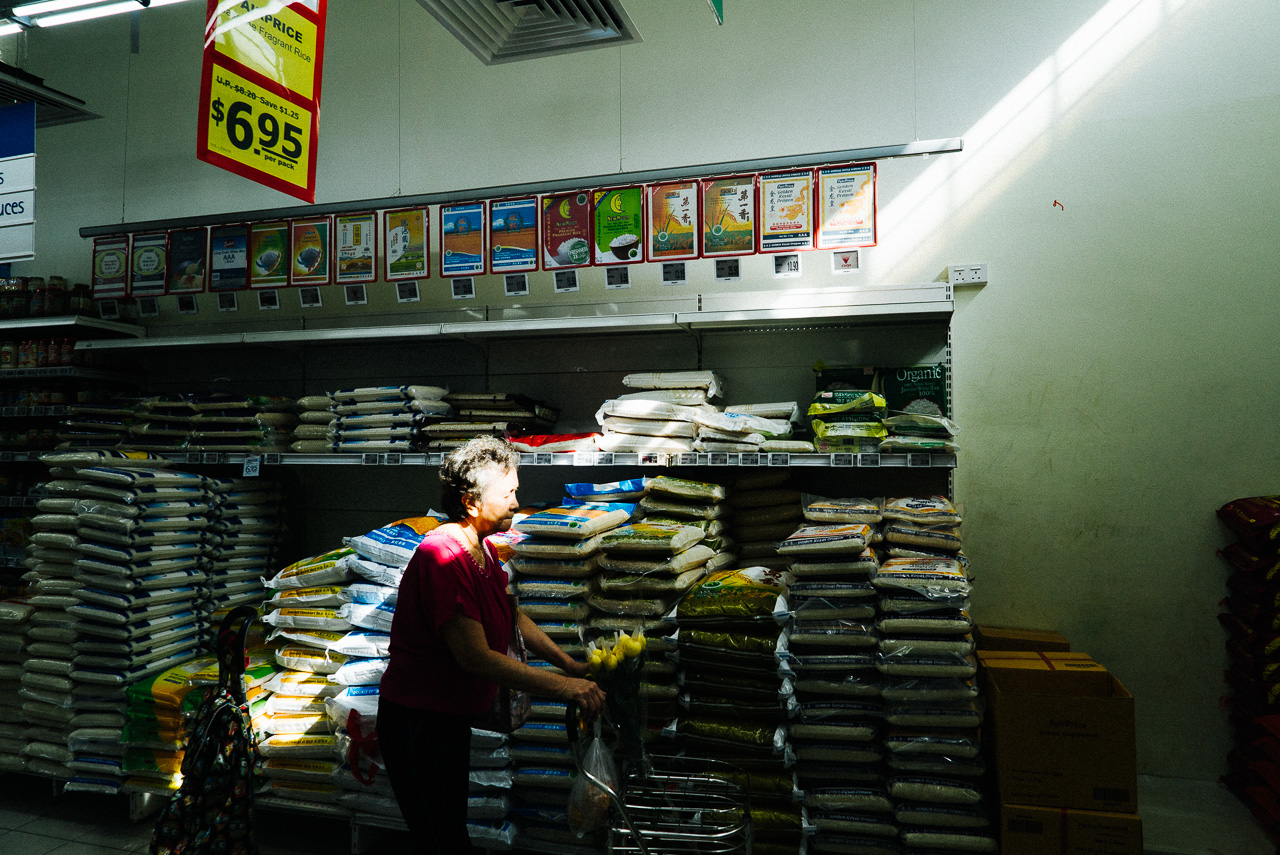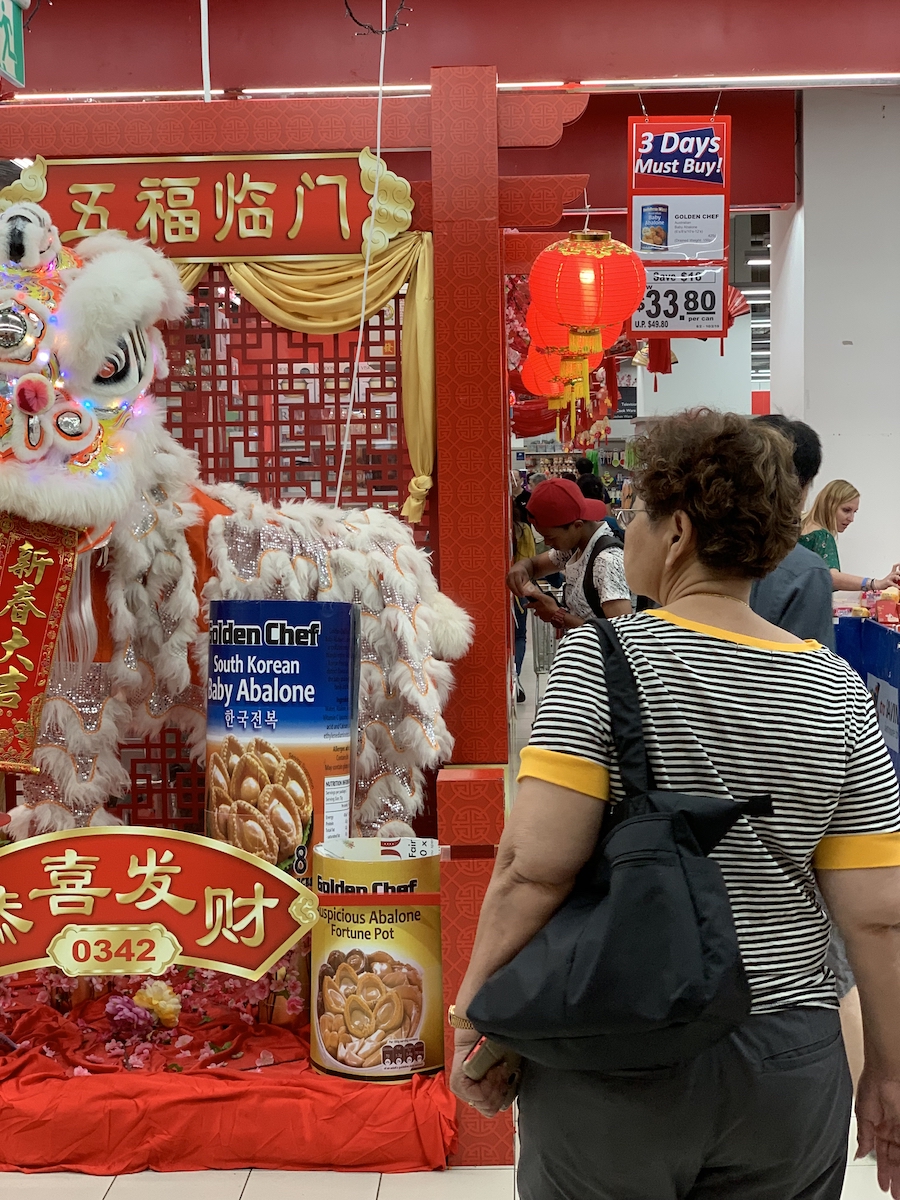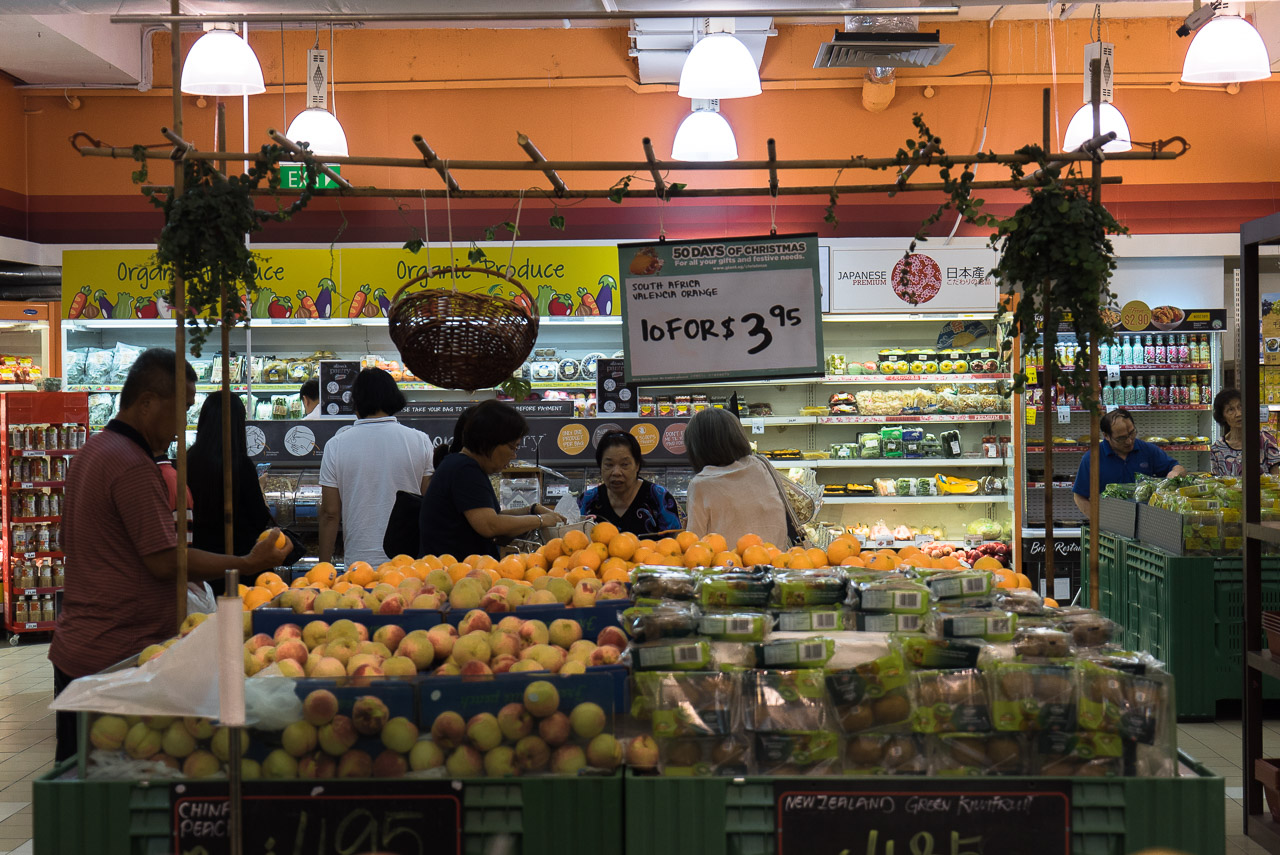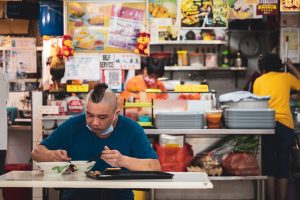Top image: Khaliq Masuri
This article was first published Feb 9 2019.
Singaporean aunties annoy me as much as they do everyone else.
At that odd, second pubertal phase after adulthood and before benevolent senility, aunties seem to undergo a psychosomatic upheaval. Everyday phenomena like queues suddenly become metaphysical quandaries; sitting down grants such an intense physical pleasure that their desire for it overrides all social grace; not knowing how well the neighbour’s six-year-old performed for her kindergarten assessment instils in them the same existential terror they instil in the rest of the population.
ADVERTISEMENT
But a chance encounter with an auntie triggered a chain of events that prompted me to view them in a different light—to the extent that I am now convinced auntie culture, not hawker culture, should be Singapore’s entry into the UNESCO Representative List of the Intangible Cultural Heritage of Humanity (or UNESCORLICHOH for short [pronounced you-ness-corlick-oh]).
This epiphany was sparked by an innocent post-midnight trip to their natural habitat, NTUC FairPrice. I had chosen to go shopping at that hour precisely because I wanted to minimise jostling with aunties.
While scanning the types of toilet paper (who knew there could be so many variants?), an auntie approached me, her heart perhaps softened by my obvious cluelessness of the world of toilet paper; her territorial instincts perhaps made generous by the emptiness of the surrounding space at this hour.
“Beautex good. Cheap, but don’t need to wipe so many times. Not like the house brand.”
“Orh,” I replied meekly.
“Aloe vera one so expensive. You think got use?”
“I haven’t try before. But ya. Wah, so expensive.”
“Take Beautex can already. Most worth it.”
“Okay thank you auntie.”
My choice made for me, I dutifully placed the rolls of Beautex toilet paper into my shopping cart, and began to make my way to the cashier when I noticed that my shadow had suddenly taken human form, with a voice issuing from it.
“This Pokka Kyoho grape juice last time is $3.75, now $1.50 only. Discount a lot! Got all the vitamins also. ABCDE.”
She picked up the bottle.
“Orh, BCE. But also good.”
I explained that I don’t drink sweetened beverages, and she praised me for being healthy, before wandering off as silently as she had appeared in my life.
More auntie than most
After that clandestine midnight encounter in which I emerged not only psychologically undamaged but enlightened, I felt a desire to get to know the ‘auntie’ better. It was as though a state of euphoria had descended on me after I had survived a literal trial by fire, and was thereafter addicted to the danger.
ADVERTISEMENT
Furthermore, I realised that I didn’t know exactly what it means to be an ‘auntie’. Who qualifies to be one? Is there an age range, a set of behaviour, a certain look?
Despite this formlessness, it is a concept so tightly interwoven into our daily life that we use it thoughtlessly in our everyday vocabularies without even knowing exactly what it means.
“You’re so auntie,” we tease our friends, when we find out they carry an umbrella and spare tissue packets everywhere they go.
Going into incognito mode, checking cashback terms, and searching for vouchers before buying anything online?
“Auntie leh you.”
Even something as innocent as joining the longest queue at a hawker centre is guaranteed to prompt characterisation of being an auntie.
Moreover, in these pronouncements of belonging to auntie culture, there is a very delicate balance of tone that simultaneously celebrates and denigrates such an identity. It is at once an acknowledgment of preparation, knowledge, and shrewdness, commingling with a disdain at the excessiveness of such measures.
But where is the boundary between these two realms, and why does it exist? What pushes one over the edge to be ‘auntie’? More pertinently, how do we understand this figure and the culture to which it belongs, especially in the context of our society?
The auntie rabbithole
With these questions in mind—and encouraged by my education in toilet paper—I started to pay more attention to the discourse of aunties, consciously forcing myself to be more receptive towards them. I was surprised at how different these encounters were from everyday antagonistic experiences, all because I made the effort to participate in these interactions.
During another FairPrice shopping trip, the cashier auntie, apropos of nothing, asked if I was doing the grocery shopping for my mum, if I still live with my mum, and was still single. In my usual state of auntie-annoyance I would probably have frowned at her and sullenly remained silent.
But this time I made myself reply: yes, sadly, to all questions. The cashier auntie, contrary to my expectation that she would, on cue, morph into the Chinese-New-Year-anal-probe auntie, was warm and encouraging. She told me I just had to get over my shyness and I’d be able to find a partner.
At the same time, she warned me not to date an ah lian because they are zhen ke pa—‘very terrifying’—and abruptly fell silent.
Later, while having a back massage at a fancy hotel (which I could afford only because of a voucher), the massage auntie chastised me for having a stiff shoulder after accurately deducing that I spend the entire day on the computer like every single millennial on this planet.
Rather than glare balefully at her shoes from the hole into which my face was shoved, I asked, “Then how?”
There was a moment of silence, as if she hadn’t expected me to reply. Then the torrent emerged. She recommended me a massage parlour at Fu Lu Shou near Bugis—one that she goes to herself, before taking special care to give me precise directions so I would not happily end up at a “same same but different” type of establishment.
I was surprised. My new encounters with aunties made me realise the wealth of knowledge they had about basically everything—and more fundamentally, not just how much I could relate to them, but how much these middle-aged strangers could relate to me.
The patron saint of hawker
Of course, like all high-risk investigative journalism, my enquiry into the worldview of aunties was met with violence, threats, and a generous helping of tsks.
Not all aunties responded warmly to my smiles and conversations. Some snapped at me when I tried asking (sincerely!) about their day after I gave them my seat on the train. Some, strangely, took more produce than they originally needed when I asked them if it was on sale. Some called me a siao lang when I replied to their random, rhetorical questions.
Nonetheless, from the aunties I interacted with, I received romantic advice, a sociological analysis of particular subcultures, toilet paper endorsement, shopping tips, and a diagnosis plus recommended treatment plan for my physical health.
If these aunties’ behaviour and domains of knowledge don’t satisfy the UNESCORLICHOH criteria of being “social practices, rituals and festive events”, and “knowledge and practices concerning nature and the universe” that “reflect cultural diversity worldwide and [testify] to human creativity”, then, really, what does?
Sure, our hawker heritage fulfils the demands of the UNESCORLICHOH as well. It’s indisputably a manifestation of “traditional craftsmanship” that can “reflect cultural diversity worldwide” in one single dish.
But it is the auntie who is the patron saint of the hawker. Visit any hawker centre and you will realise that aunties single-handedly keep our hawkers alive.
Thus, even if we manage to enshrine our hawker culture in the UNESCORLICHOH, we will be neglecting auntie culture that enabled our hawker culture to thrive in the first place.
Our hawker heritage aside, aunties are also one of the most fervent supporters of our local arts and heritage. For instance, the 2017 Population Survey on the Arts conducted by the National Arts Council indicated that people aged 45 to 64 comprise 35% of total arts attendance in Singapore, which is as much as that of people aged 25 to 44.
More tellingly, community clubs and centres were by far the most popular venues for arts participation, which indicated that it is truly the aunties—who tend to haunt their neighbourhoods and not glitzy venues like the Esplanade—who are the most active patrons of the arts.
Residents’ Committee and People’s Association events such as Qigong and Gua Sha—a traditional Chinese medicine practice of scraping skin to promote healing—are similarly populated by aunties, who flock to them in such numbers that courses sometimes reach capacity and have to turn away other interested participants.
Aunties, in short, keep alive our hawker culture, our arts and heritage, and our traditional practices. Aunties are culturally significant.
More than that: the most profound understanding I developed after this auntie immersion was that auntie-hood is not an essential identity but a universal state of being not limited to age or gender. The more I talked to them, the more I saw with sudden clarity that I, and everyone I know, is and has always been an auntie all along.
Auntie culture is our culture.
Like Judith Butler’s idea of ‘performing’ gender (that is, gender is not an ingrained biological characteristic but a role we take on and enact by acting), auntie-hood is something all of us perform.
Choping seats at the hawker centre? Auntie. Scanning the Health Promotion Board Healthier Choice QR code for points to exchange for vouchers? Auntie. Skipping your warm-up in the gym and striding purposefully to the bench because it is the last free one? Auntie. Passive-aggressively complaining about aunties? Auntie.
In other words, most—if not all—Singaporeans perform the ‘auntie’, one way or another, whether in terms of preparing for something excessively, or being mildly selfish, or refusing to settle for the second best option. To be Singaporean is to be auntie.
These description of the ‘auntie’ serve to flesh out her hollow body, but what form exactly does she take?
Herein lies the difficulty. It is impossible to define the ‘auntie’ because of how all-encompassing this concept is; she evolves with the times, subsuming ideas like cashback, incognito mode, and QR codes into her vast body.
When we define, we limit. And as we know, there is simply no limit, no boundary, to the auntie.

To all the aunties we love
What, then, of that boundary we construct between celebration and denigration, between the auntie and ourselves? If auntie culture is so universal and intrinsic to all Singaporeans, why are aunties so vilified, and why is our discourse on aunties so vitriolic? A cursory scan on Reddit turns up many threads lambasting aunties (see here, here, or here). It’s almost as if the national pastime is complaining about aunties (note the irony here).
I’m more a fraud than a Freud, but I have an inkling that the idea of the auntie serves as an Other. The figure of this Other allows us to define ourselves against an unflattering inferior so that we can project on them all the qualities that we find undesirable but are, in reality, essential to ourselves.
It’s kind of like how Coke Stevia works in relation to Coke. When our colleagues drink Coke, we can drink Coke Stevia and think of ourselves as healthier. But this is actually a false dichotomy because both acts are arguably furthering the same addiction to sweet drinks.
What Coke Stevia is to Coke, we are to aunties: the same.
The solution to this problem is easy. Stop drinking Coke and start embracing our auntie-hood as an essential ingredient to our Singaporean identity. Talk to aunties, talk to your friends, talk to yourself.
Yes, with their incessant questioning and entitled grins, aunties will still make you want to take that cucumber at NTUC and… make a cool, refreshing salad.
But the next time an auntie asks you what your job is how much you’re earning do you have a boyfriend girlfriend give up your seat to me I deserve it more, I implore you to ignore their tone. Take it with the patience of a devoted husband driving to Simpang for prata at 3 AM to satisfy his 8-month-pregnant wife’s cravings, or take it like you’re Anastasia Steele.
Then reply, with as much level-headedness as you can muster, and with complete sincerity. More often than not, this openness to engage takes most people aback, and they will start to talk to you on with a friendlier and more conversational tone.
If it fails, and if you have the patience of a saint, compliment them on something: their flawless Kiyo dress or their perfect perm. Take the attention away from yourself and direct the spotlight onto them. After all, who doesn’t love talking about themselves?
In the event that you are still met with hostility, well, some people are just assholes.
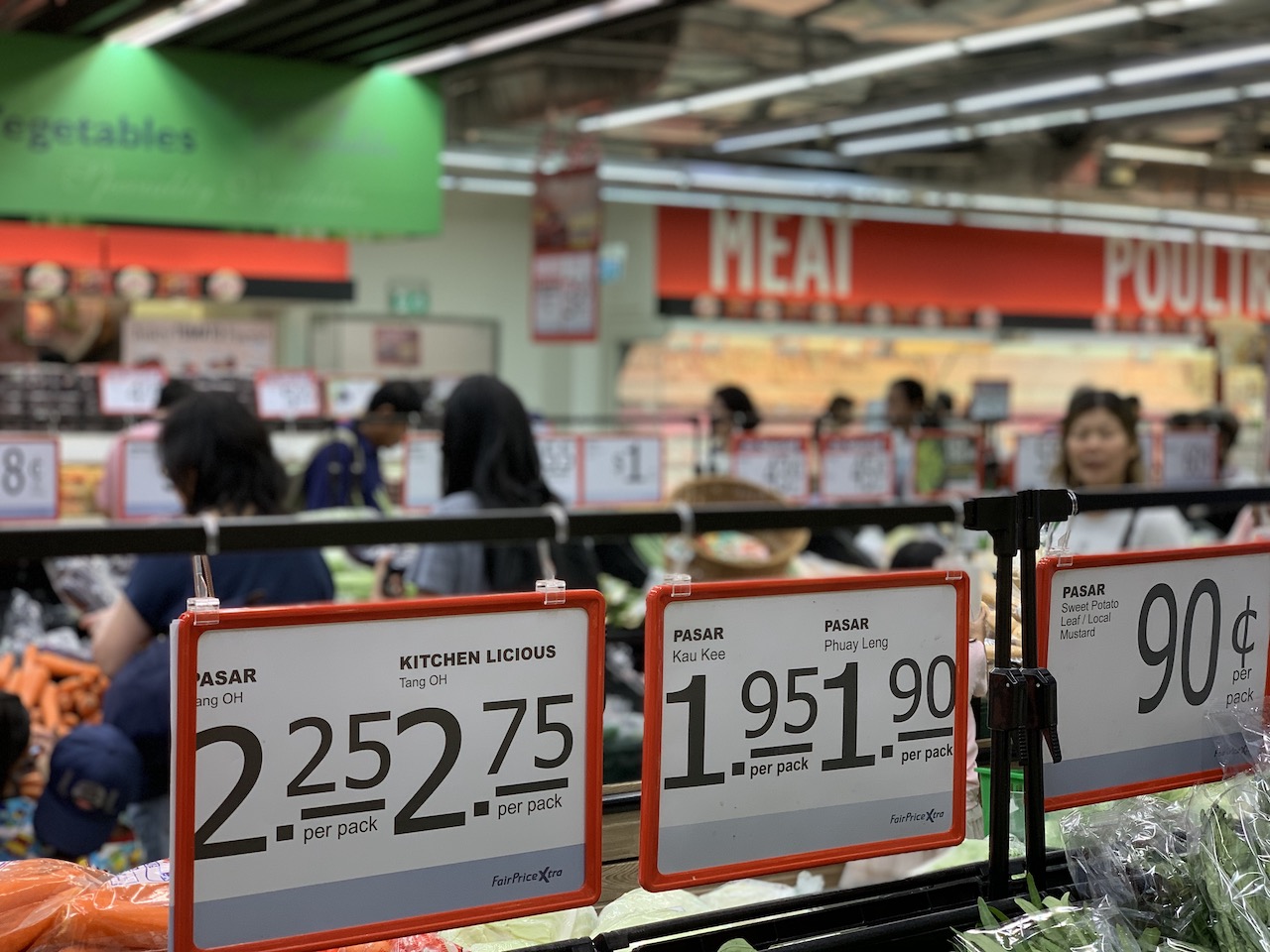 If these diversionary tactics go well, what began as meaningless banter will hopefully blossom into a fruitful conversation. It will still be meaningless in the sense that the topic, in all probability, will orbit around money, other people, and romance. (Though in all honesty, what else do we talk about when we meet our friends?)
If these diversionary tactics go well, what began as meaningless banter will hopefully blossom into a fruitful conversation. It will still be meaningless in the sense that the topic, in all probability, will orbit around money, other people, and romance. (Though in all honesty, what else do we talk about when we meet our friends?)
However, interacting with aunties also grants an insight into the collective unconscious of Singapore. The auntie is the mirror through which we see ourselves clearly, where all the distortions of our idealised self-perception are removed.
If you strip away the superficial layer of auntie-hood idiom, you’d find that the syntax governing thoughts—and our behaviour—is the same across us all.
Auntie culture, and not hawker culture, should be Singapore’s candidate for inclusion in the UNESCORLICHOH.
You can’t go wrong rooting for the Singapore auntie. I mean, she was right. So right. Beautex really is a great brand of toilet paper.

